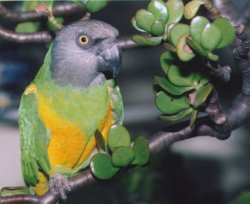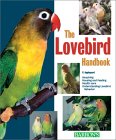When a Bird Escapes: How to Find a Lost Bird
There is nothing quite like the feeling you get when a pet bird suddenly takes off, flying into the wild blue yonder, while you watch helplessly from the ground below. The first time this happened to me I became frantic, running around the neighborhood and calling for my one-year-old senegal parrot, Max. Max’s wings were trimmed, but they had come in enough to give him lift. The other contributing factor was that my house sat on a high hill in Los Angeles, so Max could get a considerable distance even without much lift. I could not get down the steep hill on foot, so I had to drive my car down to Sunset Boulevard to start my search.
By nightfall I was inconsolable as a cold wind blew into Southern California and a heavy rain started.The next day I started my search again. A kind friend came to help me. While we were calling for Max a young girl stuck her head out of second-story window.
“Are you looking for a green bird?”
My heart leapt. She told us that a woman had “saved him” from some cats and taken him in. She pointed out a cluster of bungalows where the lady lived. My friend said she thought a particular door was the right one (she tended to have a sort of sixth sense about these things), and I knocked. At first the woman who answered acted as if she didn’t know what I was talking about. I thought she didn’t speak English, but then her daughter appeared, gave her mother a dirty look, then announced.
“Yes, we have your bird.”
 My friend pushed me through the doorway and there was Max, sitting on top of a parakeet’s cage. I was so happy I could barely contain myself. Max acted somewhat indifferent, as if in a state of shock. For the next few months he acted like a little prince, as if his “adventure” had made him a man of the world.
My friend pushed me through the doorway and there was Max, sitting on top of a parakeet’s cage. I was so happy I could barely contain myself. Max acted somewhat indifferent, as if in a state of shock. For the next few months he acted like a little prince, as if his “adventure” had made him a man of the world.
I was lucky to get Max back. In most cases, an escaped bird will not be found. There are some steps that can be taken to prevent loss and to increase your chances of getting your bird back should he or she escape even if you’ve taken these precautionary measures.
Prevention First
The best way to prevent a fly-away is to keep your bird’s wings trimmed. As soon as you notice the tips of new flight feathers showing, start thinking about a new trim. If you can’t make it to the groomer right away, take extra precautions to protect your parrot or other pet bird. Don’t take the bird outside. If the bird sits on a tower or on top of its cage and this is near a door leading outside, make sure your bird is safe in his or her cage if the doorbell rings. A stranger at the door could spook your pet. He may fly directly out that door.
If Your Bird Does Escape
The first thing to do is get out there and search immediately. You may be able to retrieve your bird if he hasn’t gotten too far away. However, many parrots who have had their wings clipped for years will not be confident flying. Therefore, your bird could be sitting right above you in a big tree, wishing you would come get them, but too terrified to fly down to you. If this is the case, enlist the help of neighbors. You want someone the bird knows to remain under the tree talking to it, trying to keep it calm so it doesn’t fly any farther away. You then want to find a ladder tall enough to reach your pet. You may have to go door to door explaining the situation. If you have a regular handyman, he may have a very tall ladder that you could borrow. The person who goes up to the bird should be someone he knows. A stranger may frighten him and cause him to fly to another tree.
If you have other birds, you can try setting them outside in a secure cage with a bowl of food nearby. Sometimes this familiar sight (and squawking) will attract your bird and give him the courage to come out the tree.
If your bird is nowhere in sight the most important thing is to get signs up. A tame parrot will often go to a human, any human, when it gets hungry enough. You want to canvas the neighborhood to make sure everyone and anyone knows this bird is yours should it show up on their back porch. The best sign will have a photograph of your bird. Give a detailed description. If the bird has a band, give that information (it is a good idea to withhold the band number itself so you have something that you can use to prove it is your bird; just give the initials and the year at first).









